BATMAN (1989): Why Burton Does The Dark Knight Best

If there is one word that can sum up Dallas…
The first thing I remember of the 1989 live-action adaptation of Batman is how much I watched it as a child. I must have been ten or eleven years old, picking up an old VHS copy from my local library and watching it repeatedly, much to my mom’s chagrin. But I was hooked, no, transfixed by the whole experience. Everything from the spooky tone, the fight scenes, and Danny Elfman‘s creepy and atmospheric score had me under its spell.
This is not the first time the Caped Crusader has been put on the big screen, and considering the 2022 film The Batman, expect to see more Batman flicks as time goes on. But out of all of the Batman movies I have seen, the 1989 version, in my oh-so-humble opinion, is the best, and director Tim Burton captures the moody magic of Batman with a deft hand. And that is not just me looking through the lens of nostalgia goggles; I plan on backing up such a bold claim.
What is Batman without Gotham?
After the blaring theme of Batman is played in all its earworm glory, the viewer is given their first shot of Gotham City. The first noticeable thing about Gotham in this iteration of Batman is that the set looks like an inverted art deco piece. Instead of shining beacons of hopeful industrial Americana, the towers are imposing and act as huge shadows over the minds and literal bodies of the inhabitants of Gotham City. Gotham is a city that was once a thriving megalopolis but is now a corrupt crime scape on life support.
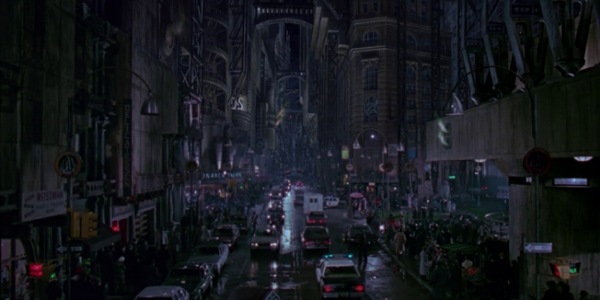
In Batman, Gotham City is a living entity in its own right, but one that is cancer-ridden. It is also beautiful since many of the buildings in this film seem to be painted into the background. It would have been simple to base Gotham City on a real place, such as when Christopher Nolan filmed the Dark Knight Trilogy in Chicago or 1970s New York City, as seen in 2019’s Joker. But Burton wanted to show the grimy beauty of Gotham City by making it seem like it was in an alternate reality.
Most pedestrians are just as grimy as the city itself, hopeless and shuffling about looking for a quick buck or a cheap thrill to make them feel as if their lives have meaning. Tim Burton has always had a knack for the macabre that was sometimes playful and tongue-in-cheek (such as Beetlejuice). Other times, his gothic sensibilities overrun the entire project. But Batman finds a way to straddle the line by bringing Burton‘s aesthetics to just the right amount of silly and scary. If anyone were to try and describe the visual style of Gotham, it would be a cross of 1980s hedonistic sleaze with the dank, smokey, and sordid thrills of a 1940s Noir film. The citizens dress as if they are either from the heights of 80s fashion or like a classic mobster. Batman is the product of two times, in a sense.
Every street in this version of Gotham City carried the risk of someone being mugged, beaten, or worse yet, murdered. The viewer is introduced to danger within the film’s first few minutes when a family of three is seen walking down an alleyway. They appear to be visitors, struggling to find their way in the macabre maze that is Gotham. All three are skittish and want nothing more than to be in a safer place. The family’s father is attacked and taken for what little wealth they have by a pair of thugs.
After that, one of the thugs, who feels actual guilt about attacking an innocent family, tries to persuade his partner in crime that maybe they should not have mugged the family in question. His biggest fear, “the bat,” as he calls him, punishes bad guys like them. His partner brushes off what he considers to be nothing but an urban legend. This is where the smoky streets of Gotham are used as a cover for Batman, and the viewers are introduced to the caped crusader.
Michael Keaton: The Batman Who Nobody Saw Coming
With setting the mood of Gotham City out of the way, it is time to get into the nitty-gritty of this film, which is the eponymous Batman. Before the film was released, fans and the media scoffed at the idea of Michael Keaton playing Bruce Wayne/Batman. Before Batman, Michael Keaton was known, for the most part, as a comedic actor and starred in roles that pigeonholed him as a funny man, striking box office gold with such comedies as Mr. Mom and Johnny Dangerously. While comedies such as these catapulted Keaton into the limelight and made him lots of money, they typecast him as someone to not be taken seriously since comedy was his bread-and-butter.
The 1988 smash hit Beetlejuice also aided in such typecasting, and it was the first film that Burton and Keaton worked on together, with Keaton playing the titular role. After the success of Beetlejuice, it was clear that Tim Burton wanted to work with Michael Keaton again for his live-action adaptation of Batman. When the media saw that Michael Keaton would play the caped crusader, many were stunned by such a choice and felt he would be a horrible miscast.
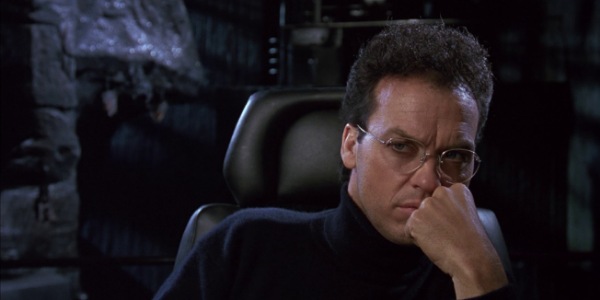
When people think of Batman as a character, they think of a tall and imposing man with a menacing demeanor and bulging muscles to match the art of intimidation. On the other hand, Keaton had softer features and stood at a modest height of 5’9,” far from a six-foot mountain of a man that was whipped up in both comic book lore and the collective psyche of fans. Physical attributes aside, Keaton was poised in the minds of the masses to be a man who lacked the mental prowess of a masked vigilante. Mr. Mom himself is going to play the Dark Knight?
But many viewers were pleasantly surprised to see that Keaton could not only pull off the physical prowess of Batman but also the mental cunning. There was also an emotional depth to Keaton‘s version of Batman that showed that the man could step outside the realm of comedy and make the various criminals of Gotham City crap their pants in fear. He may be on the average height of the spectrum, but he is a hero where his brains matter more than his brawns.
How Keaton portrayed Bruce Wayne is also one of the best representations of the character. Instead of falling into the billionaire playboy archetype, this version of Bruce Wayne is more introverted and prefers not to be in the spotlight. Some fans may consider this a misstep, a fluke of characterization, but in the grand scheme of storytelling, such a portrayal would make sense. A man with unresolved childhood trauma would be someone who has a few of the proverbial screws loose and would seem standoffish, almost skittish at times.
It’s as Bruce is hiding something, but despite his strange patterns of behavior, there is a weird charm to this version of Bruce that he can attract the attention of the beautiful Vicky Vale, an ace photographer of the Gotham Times newspaper. Vicky can tell that there is a dark secret in Bruce and that she wants to enter into his world, but nobody would suspect that a dork like Bruce Wayne would be someone as lethal and imposing as Batman.
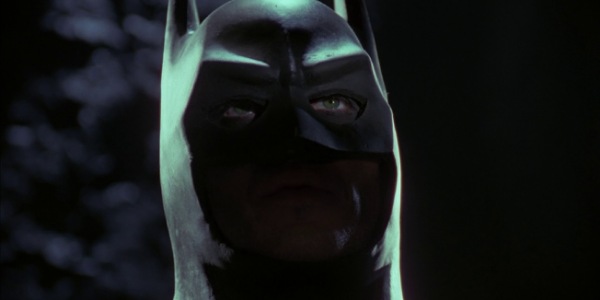
One of the other aspects of this Batman version that I relish in his movements. Because Bruce Wayne, in this iteration, cannot move his head in his Batsuit, so he has to move his entire body whenever he needs to grasp his surroundings. This makes Michael Keaton‘s version feel like he is someone who is not of this world, moving like a monster which is the psychological game Batman wants to play on his enemies. The head movement dilemma even became a referential joke in The Dark Knight when Lucious Fox asks Bruce Wayne about the problems with his Batsuit; Bruce makes it clear that he wishes he could “move his head” a direct nod to Batman ’89.
It is also of interesting note that this version of Batman is more along the lines of an anti-hero than the straight-laced heroism of later iterations of Batman. The primary example is Michael Keaton‘s Batman is not afraid to kill his foes to make Gotham City safer for its citizens. Some may think this sadistic, and I can certainly understand the sentiment, but to let a madman such as The Joker live is a crime against the citizens of Gotham. In most versions, the Joker is thrown into prison by Batman only to escape and kill again, rinse and repeat, more death, corruption, and pain. This was always one of the biggest drags for me in most of the later retellings of Batman stories and the gleeful sadist in me was glad that the Joker would push up daisies at some point in the film.
Jack Nicholson: The Man Who Laughs
The crux of any Batman film is his arch-foe, the Clown Prince of Crime, the Joker. Many iterations of the Joker have left an indelible mark on fans. From Ceasar Romero of the campy 1960s Batman TV series to the more recent, gloomy, and tragic, dare I say Shakesperean portrayal of Joker by Joaquin Phoenix in 2019. It is safe to say that in 2008, the shocking and anarchic Joker of Heath Ledger in The Dark Knight was the pinnacle of the character in cinema history. Still, Heath was standing on the shoulders of an acting giant, that being the one and only Jack Nicholson. His portrayal of the Joker gives Ledger‘s version a run for its money, and Nicholson brings a whole new meaning to the phrase “The man who laughs.”
While watching Nicholson do his thing as a child I was equally disgusted, intrigued, entertained, and frightened. Heath Ledger might have the creep factor and a grotesquely scarred face to boot, but Nicholson brought an uncanny and goofy vibe to his performance that made it more unsettling. Any other actor would have messed up the character with his Cheshire Cat smile and tortuous cackle. Still, Jack Nicholson, whether playing a recovering alcoholic in a haunted hotel or a free-spirited mental asylum patient, knows how to play crazy characters. His version of the Joker is no exception.
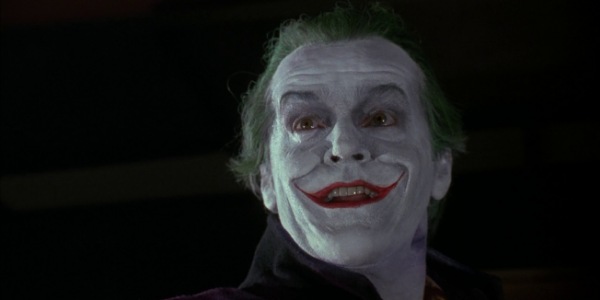
Jack Nicholson goes for more of the campy version of the Joker with all of the gags, one-liners, and bad puns to bring the character together. This version of the Joker is closer to the style presented by Ceasar Romero from the 1966 Batman television series. Do not be misled, however, because while he may channel that same campy spirit, Jack is no joke when it comes to the sinister factor of playing the Joker. He has all of the morbid tools of villainy that the Joker is ubiquitous for, such as acid he shoots from his lapel flower, a joy buzzer he can shock enemies to death with, and various comical firearms and explosives.
One scene with the joy buzzer stuck with me as a kid and is still effective to this day. Upon taking over Gotham City’s organized crime world, the Joker kills a rival mob boss by “shaking his hand,” and the man is fried to death. The charred corpse that was once an influential mafia leader is an example of what to do in a movie if one wants to make a lasting impact with practical effects.
Going back to comparisons between Jokers, Heath Ledger‘s Joker is more of a philosophical outlet, exuding the kind of madness that sucks the viewer in. That version of the Joker is akin to reading a manifesto from an intelligent madman who, while one cannot agree with such a worldview, there are times where a darker side of your psyche will not only be intrigued but dare I say, nod in agreement. Jack Nicholson‘s Joker commits his crimes for the simple pleasure of it.
This Joker admits he’s as nutty as a squirrel and has no shame in it, even going so far as to call himself “the world’s first homicidal artist.” That phrase is the term he used when he met Vicki Vale in the famous museum vandalism scene where the Joker and his goons ransack the Gotham Art Museum while jamming to Prince‘s Party Man. On a side note, I learned what the word enema means after watching this film as a kid due to the funny Joker line, “This town needs an enema!” But back to the characters of the film, I believe it is time to discuss the secondary characters and how they make but break the film once in a while.
Be Like Bob…
Bob is one of Joker’s goons, the loyal right-hand man who has been with Joker since before his chemical accident when he was the mafia man, Jack Napier. Why do I start this section with a secondary character? Because Bob is awesome, leaving such an impact that back when Batman was going through its inevitable merchandising phase (what major Hollywood movie does not?), there was an action figure of him released to the public. It’s fascinating that a character that probably had no more than five minutes of screen time would be immortalized in plastic, but that’s beside the point. Batman has some stalwart side characters worth a second look.
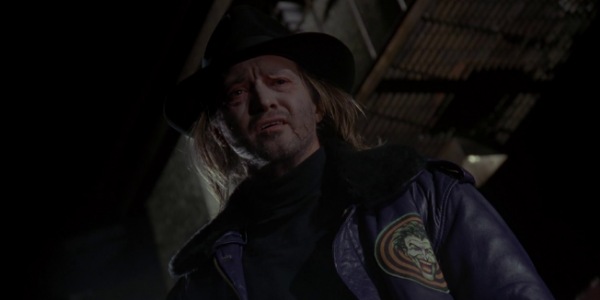
Vicki Vale, the love interest of Bruce Wayne and the obsession of the Joker, may seem like a walking damsel in distress trope at first, considering the excessive amount of times she has worked her lungs out by screaming in the movie. Sure, she has to be saved by Batman several times, but there are scenes where she can hold her own, and she exudes the most charm and nuance as a character when interacting with Bruce, not Batman. Vicki is an example of a character who oozes an air of helplessness but also shows strength.
Vicki cares for Bruce as his newfound romantic partner but also knows her limits with his, in a frank manner, bullshit and will not tolerate it. Unlike some other heroines I have seen in romantic leads who put up with toxic behavior from the men in their life, Vicki knows her worth, but she also understands the pain that Bruce is going through, even if she does not know that his alter ego is Batman. This is not to say that Bruce Wayne, in any sense, is a toxic partner, but male characters like him tend to become so if the women in their lives become doormats. Yes, Vicki may need saving at times, but she is anything but a pushover.
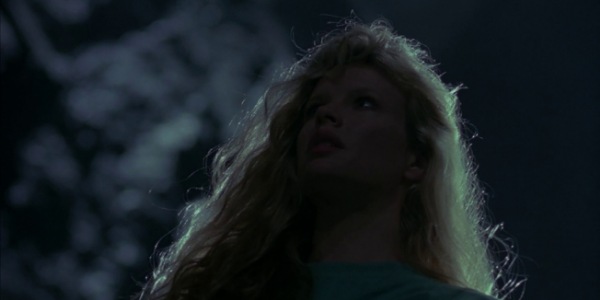
Bruce Wayne’s faithful butler, Alfred Pennyworth, stands out in the film. Michael Gough plays him, a Hammer Horror Film legend who, while not taking up vast amounts of screen time in Batman, leaves his mark in every scene he is in. He takes the back seat in most of the film, performing menial tasks for Bruce, but when Bruce is stuck in a puzzle, whether it has to deal with his alter ego or a social matter, Alfred is always there to provide sagacious wisdom. Bruce may be Batman, but Alfred reminds him that there is a world outside of the Batcave that he has to live in the best he can. I think we all need an Alfred in our lives from time to time.
How Batman ’89 Handles its Themes
As much as I love The Dark Knight and 2022s The Batman, one of the things that drives me a little batty (pun intended) about newer iterations of Batman (at least as far as live-action films go) is their hard swerves into pontification. For example, there were moments in The Dark Knight where the action would ramp up, pulsing and pounding a mile a minute; you’re in your seat and careening towards the edge of it in excitement. Only to then be met with a brick wall of exposition that, while written well, will explain to you once again the importance of how much one should fight chaos and nihilism and be a beacon of order and hope instead.
While The Dark Knight does handle its themes adroitly with plenty to mentally chew on for the viewer, it does fall into the weak spot of telling us and not showing us its themes. Philosophy is hammered home in the Christopher Nolan Batman Trilogy, and it is a clear example of its ideas outrunning its execution. Batman ’89 is more of showing us its themes and less of beating the fans over the head with them, and when philosophy is touched upon, there are a few key lines of dialogue, and then it’s back to what viewers want to see: Batman doing superhero things.
While I enjoy The Dark Knight (Batman Begins and The Dark Knight Rises excluded), I found the constant philosophical discussions grating at times. Watching fights and action scenes take a break only for two characters to talk about how “one is chaos, and the other is order” or any other such philosophical musings are fascinating as concepts but take away from the overall experience. Most moviegoers want to see a Batman movie for the action and moody atmosphere, not to attend a TED Talk on the ethics of heroism or the pitfalls of villainy. The 1989 adaptation of Batman avoids this and only gives the most salient points on the ethos of Batman.
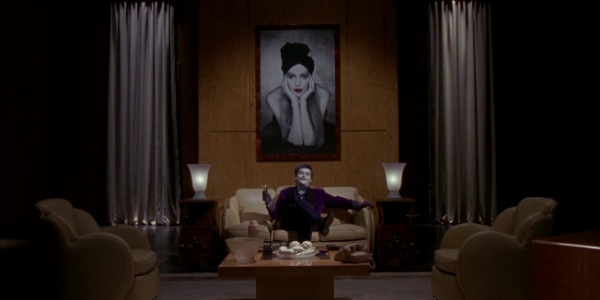
Admittedly, the 1989 Batman film could have focused more on the emotional struggle between Bruce Wayne and his demons, and the film felt a bit light in that regard. However, it provides just enough in that department to hold up, even if they act more as afterthoughts. Parents are dead? Oh well, time to careen some fists into some bad guys’ faces. There is little time to preen and think when the lives of millions are at risk!
The 89′ adaptation of Batman has some of my favorite fights in the franchise which packs the right punches to scratch that action itch. One of the key reasons I enjoyed 2022’s The Batman was because the fight scenes had a certain visceral quality to them, unpolished and primitive, where Batman was actually against the proverbial ropes at times which reminds the viewer that, beneath the intimidating black suit, there is a man beneath. In 1989’s Batman, Bruce Wayne/Batman is shown to be vulnerable and sometimes harmed in the heat of battle, such as in the famous Gotham Cathedral fight.
Batman gets his ass handed to him during several moments of the fight, taking down goons but not without suffering significant damage in the process and having to use his brains instead of brawns to mitigate his disadvantage. What makes the fight scene even more impressive is the sheer darkness of the stage. While Batman is imposing during the scene, there are moments where the viewer feels helpless by proxy due to the lack of lighting. Batman does not know where the next attack will come from, nor does the viewer. Being put in the caped crusaders’ boots helps the viewer empathize with him and feel a closer connection with their favorite hero.
The Batclusion
While this version of Batman may have taken some liberties with the source material, the overall spirit of the caped crusader is not only intact but is given the proper dues. Tim Burton is already a master at mixing the whimsy and the macabre. Batman has just the right amount of the former with all of the moody power of the latter to make it an unforgettable experience. What makes Batman ’89 work where others have fallen short is that it does not hammer its points home but instead seduces and enchants the viewer with its unique sense of moody and dark magic, which kept a young Dallas entranced for countless hours and continues to fascinate to this day.
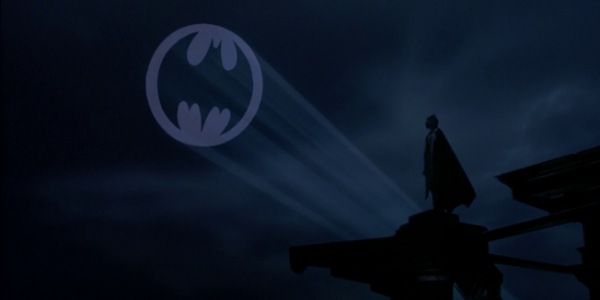
Going back to the first part of this feature, my mother never did get the fascination I had as a lad with this movie, and more likely than not, she would not get why a grown man would fawn over a film about a man dressed as a bat beating up bad guys. I think she would change her mind if she saw it again after all these years, and if you have not seen Batman in a while, give it another viewing.
What do you think? Do you like this version of the Caped Crusader or do the later Batman movies work better for you? Leave your comments below!
Batman was released June 23, 1989, in the United States
Watch Batman
Does content like this matter to you?
Become a Member and support film journalism. Unlock access to all of Film Inquiry`s great articles. Join a community of like-minded readers who are passionate about cinema - get access to our private members Network, give back to independent filmmakers, and more.
If there is one word that can sum up Dallas Marshall, it would be weird. He is a strange fellow who is also a writer, anime nerd, and film buff who can also talk for hours about mythology and out-there literature. He has been sighted at local used bookstores perusing for horror books and manga. He has also written a book about Japanese animation called Anime Adrenaline! Which can be found on Amazon. You can also catch him on his own website at www.Dallasthewriter.com












